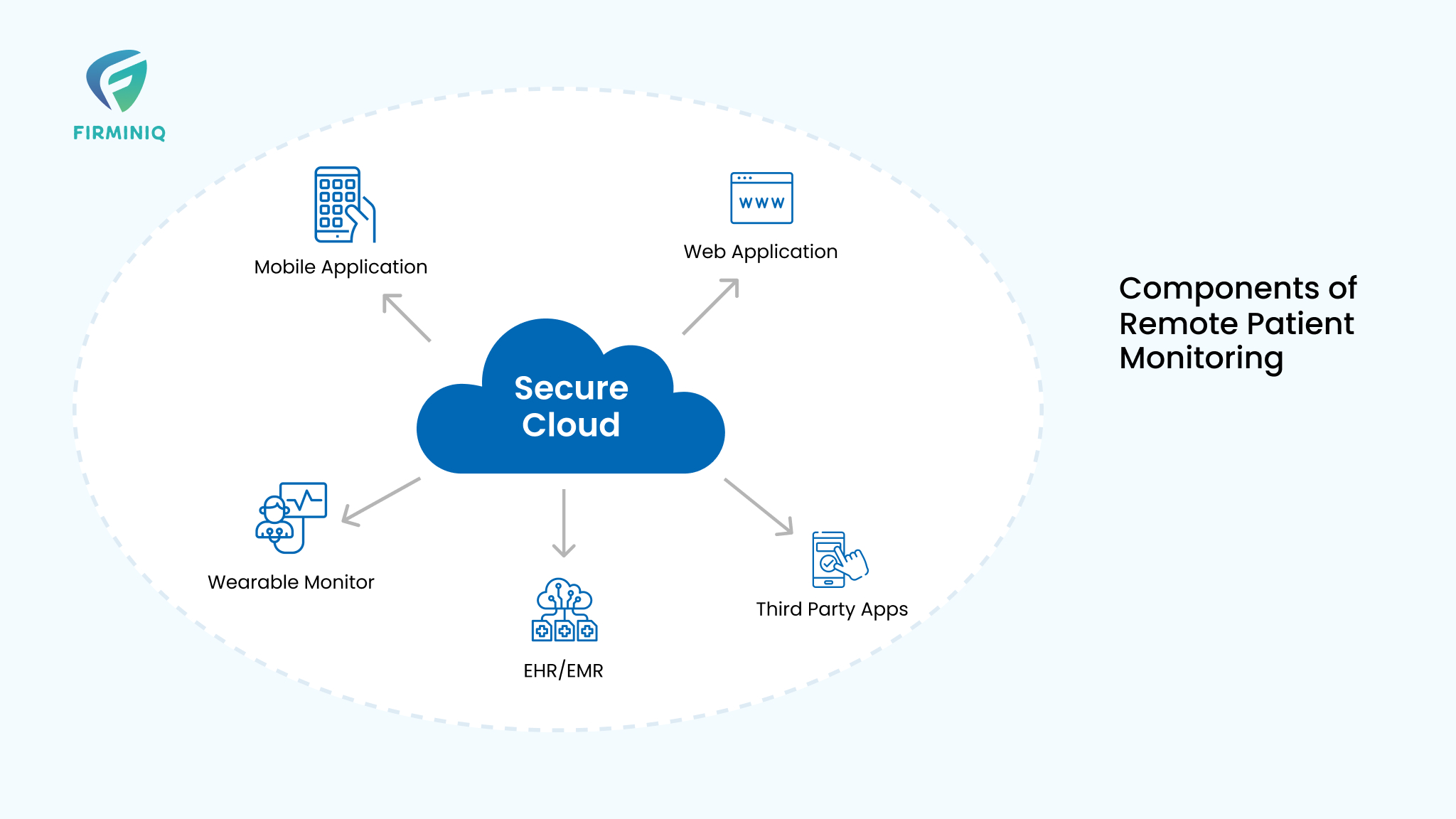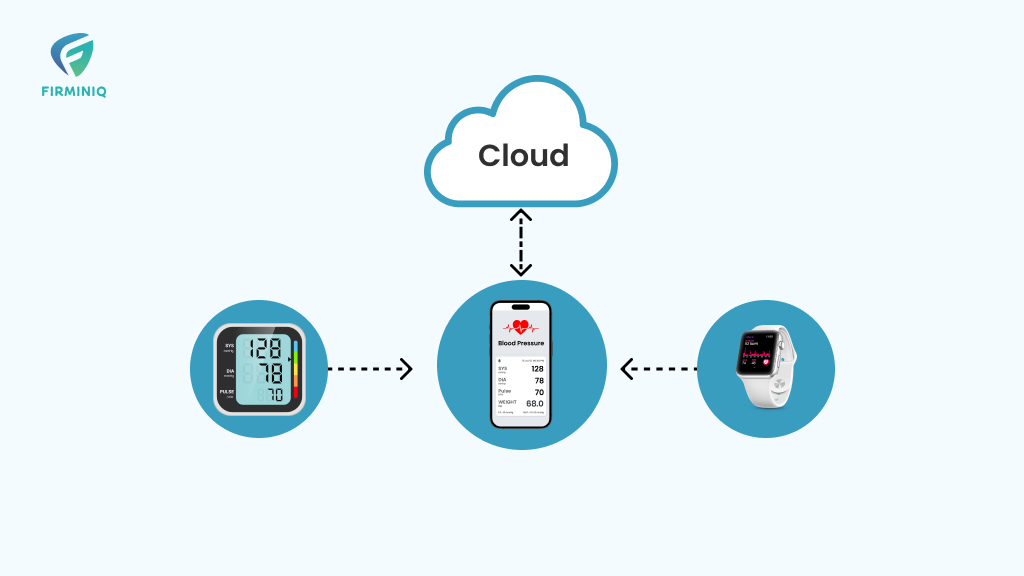Remote Patient Monitoring continues to gain traction as a healthcare use case because of the flexibility it provides to physicians, patients, hospitals, and insurance companies. It revolutionizes the way preventive healthcare is delivered and is now embraced by the entire healthcare ecosystem. Therefore, it turns out to be a wake-up call for the healthcare industry towards a value-based care approach and building efficient remote patient monitoring solutions.
MarketsandMarkets research says that the global remote patient monitoring app market will reach USD 175.2 billion by 2027 from USD 53.6 billion, at a CAGR of 26.7%. It owes to the enhanced demand for the development of feature-rich and robust healthcare applications. So, as the demand rises, the need to build the next frontier of care delivery that could help doctors and patients rises too!

Though there are plenty of businesses that compete in the RPM domain, not all reach the final line. For building such solutions there are crucial considerations from the stakeholder’s perspective so the healthcare organizations always stay ahead in the competition. The blog helps you explore all these vital considerations that can be implemented to allow end-users and physicians to use the app seamlessly.
Stringent Plan Before Starting Gives More Clarity
Healthcare organizations must have a robust plan of action that focuses on diverse groups including end-users, physicians, and technology considerations. Focusing on the clinical group, the physicians must be able to define the patient community they are monitoring, what problems RPM would help them solve, and the devices used for the monitoring.
The other is the end-user. The solution must be designed in a way that is easier to be used by any age group, check their vitals, and seamlessly communicate with their physician.
The last one is the IT/Developer group. Yes, the planning and building of RPM solutions may face technical and security constraints. Therefore, the right partnership with the clinical stakeholder and IT with expertise in understanding the landscape, data security and privacy is necessary from the beginning to avoid any concerns.
Key Stakeholders Considerations for Effective Remote Patient Monitoring
A study by Consumer Technology Association (CTA) states that two out of three, around 68% of the physicians intend to use RPM technologies like blood pressure monitoring, glucose monitoring, and more to manage patients’ health in their comfort zones.
Widespread adoption of these technologies stresses out the organizations to build competing products and choose necessary features that could help solve all the problems. Let us discuss all these practices that make the remote patient monitoring app befitting for the usage.
1. RPM Solution Considerations for an End-User
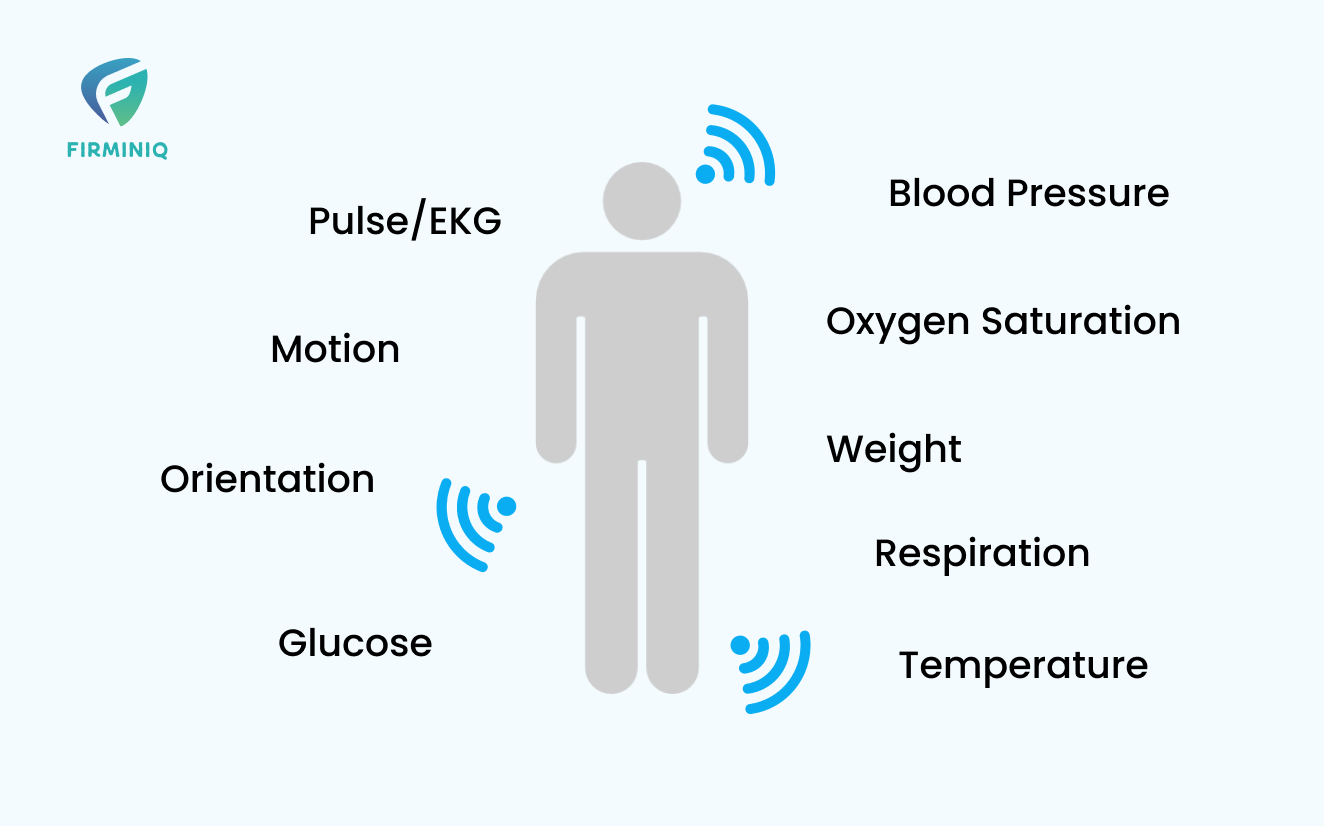
a. Easily Accessible for Elderly Patients
Straightforward design, easy navigation with clear instructions, push notifications, seamless connection with devices, and ease of readability (both manually and graphically) are a few considerations for elderly patients. From the device’s viewpoint, a video console will help users with clear instructions. Large font with the right color coding and contrast offers ease of reading to the end user.
b. Patients to Regularly Check Vitals by Themselves
The end users must be able to check their vitals by themselves including the heart rate, blood pressure, glucose level, to access their clinical condition with ease and detect risks (if any) at an earlier stage only. Both manual and graphical representations of the vitals will help users understand the readings more precisely. Further, it helps the patients to adjust their lifestyle that way or avail treatment in time.
c. Automatic Vital Data Sync
Automatic vital data sync at regular frequencies is crucial in RPM, as it supports clinical decisions when it reaches the physicians. When the feature is integrated, the physiological information and the vitals are sent to the hospital servers from the devices automatically to allow physicians to gain value and insights about the patient’s condition.
d. Balancing Patient Privacy and Data Security
The end user or patient is genuinely concerned about their sensitive data and privacy sharing, therefore requires great control over their data privacy. Also, there is the involvement of multiple stakeholders in remote patient monitoring apps, which contributes to the overall risk to privacy and cybersecurity. Therefore, offering data privacy in the form of HIPAA (Health Insurance Portability and Accountability) and other regulations are vital to solve the data privacy concerns. It ensures that the end user data and sensitive information remain protected.
e. Seamless Communication
In the RPM application, the end-user monitors their vitals, and then the data is electronically transferred to the clinicians. For the interaction, there should be seamless communication between the end user and physician via real-time chat and call options anytime and anywhere!
2. RPM Solution Considerations for a Physician
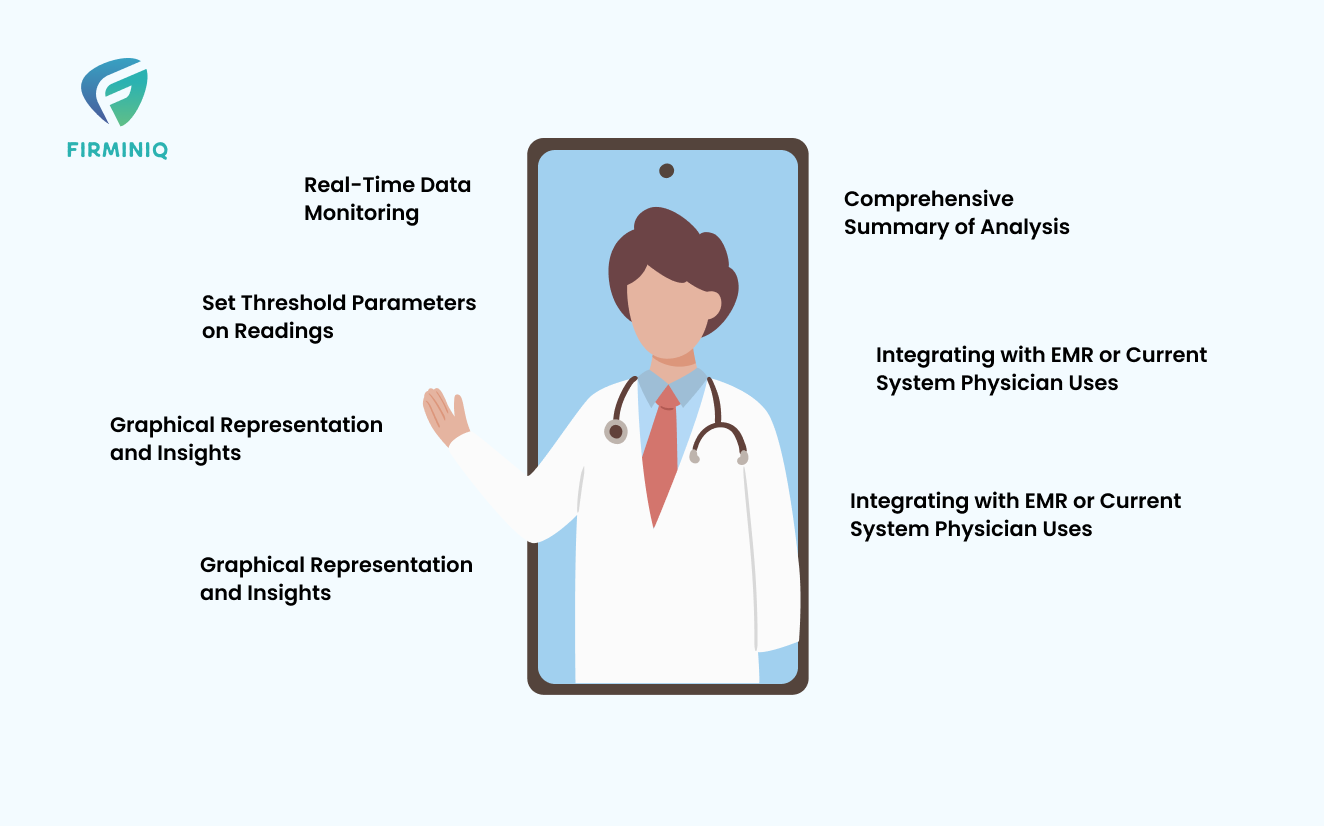
a. Real-Time Data Monitoring
RPM applications must report real-time data to streamline interaction with patients more conveniently. It makes it easier for healthcare practitioners and experts to stay informed about the patient’s condition. It also reduces the hospital admissions/re-admissions and emergencies to an extent and boosts the capacity for physicians to treat more patients at once.
b. Set Threshold Parameters on Readings
The app must be able to define the threshold parameters on the readings for vitals and get alerts accordingly. For every reading that crosses the threshold, the physician can be notified with an alert so that quick action can be taken.
c. Graphical Representation and Insights
For efficient patient care, the remote patient monitoring applications must display a graphical overview of the patient readings along with comprehensive insights. It allows the medical practitioner to make insightful decisions and prioritize care efficiency.
d. Comprehensive Summary of Analysis
The physician should be able to analyze the entire summary of the vitals, medicinal information and patient’s conditions. It gives access to more relevant trends for more relevancy and value-based patient care. When the physician obtains the patient’s history, they can collaboratively create plans with patients and minimize their chronic conditions.
e. Integrating with EMR or Current System Physician Uses
The electronic medical record (EMR) or the current system used by the physician allows them to keep records of notes and documents used efficiently for diagnosis and treatment. As per GlobeNewswire, the market of electronic medical records is expected to move towards a growth trajectory and will reach $44 million by 2026 at a CAGR of 6.5% from 2022.
Integrating these systems improves the overall workflow of the healthcare system, patient care, and the safety concerns for the data. It also offers physicians access to patient information, history, and medications on a single platform.
3. Technology Considerations for an RPM Platform
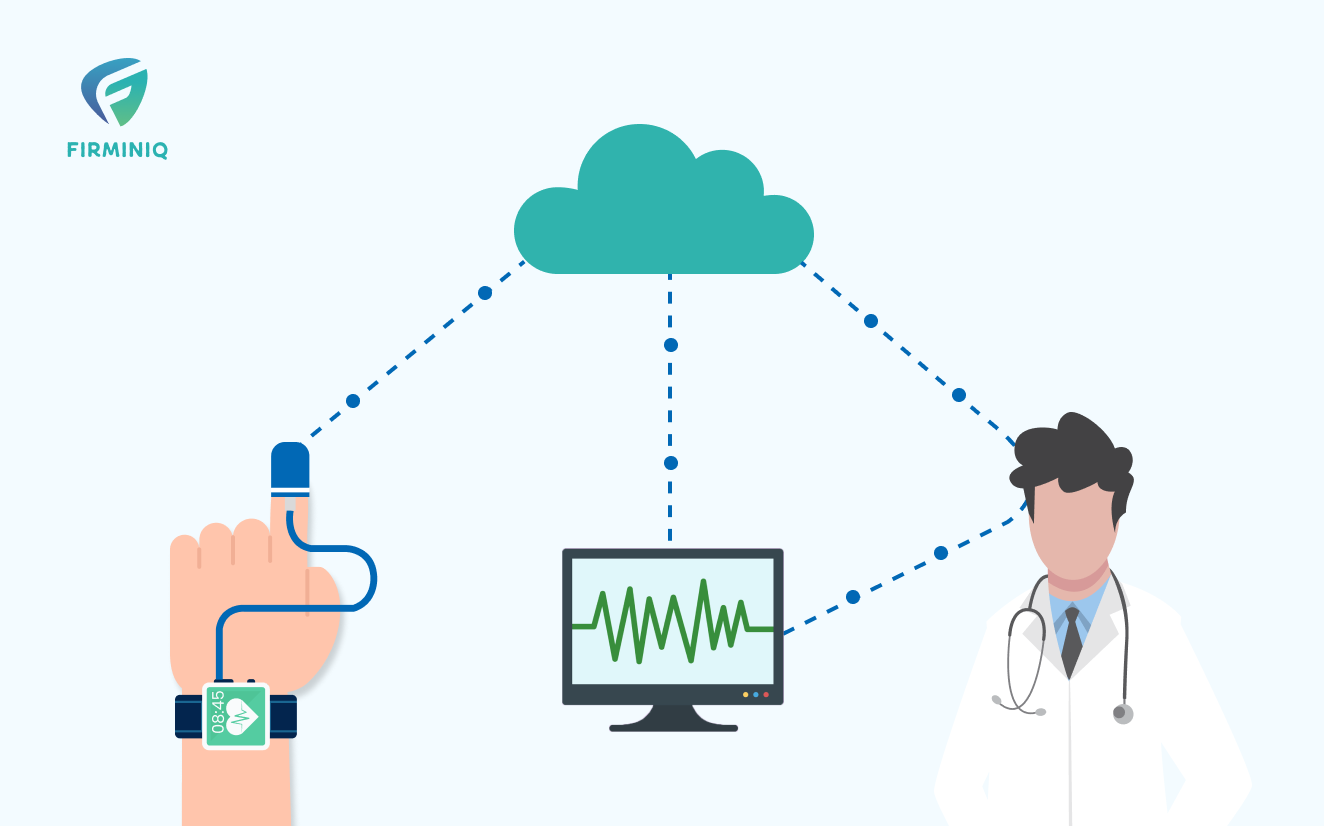
a. Focus on Security
Security being a top-notch concern for the patients, a good RPM solution should ensure making patients comfortable and ensure a higher level of safety while fulfilling the HIPAA and other compliance regulations so that the user data is secure and protected.
b. Seamlessly Integrate with Current Hospital Systems
It is another condition, and RPM applications should have a secure API to connect with current hospital systems or EHR systems, while adhering to healthcare standards. While RPM generates reports that support decision making, when combined with EMR and hospital systems it takes the patient care to the next level with all the information maintained and secured.
c. Cloud for Sensitive Data
As we know, the RPM application collects sensitive patient data, and its vulnerability is the most critical challenge. And therefore, cloud solutions should be implemented for more scalability, accessibility and eliminates the risk of data loss.
d. Hardware must Support OTA for Changes
Over-the-air updates in remote patient monitoring applications refer to delivering updated software and firmware to remote devices wirelessly. With OTA updates the deployment is kept viable, there is improved performance and device addition becomes easy. Hardware should be able to support these OTA updates.
4. Crucial Integrations in the RPM Platform
a. With Multiple Devices
The remote patient monitoring app should support connection with multiple devices like blood pressure monitoring devices, glucometers, thermometers, weighing scale, and others via Bluetooth. These devices are the most essential tools that collect patient data outside of a traditional healthcare setting and transfer it to the physician for evaluation.
b. With Hospital System
Electronic medical records or hospital systems are the vital components of RPM and provide all the necessary patient information including their health history, their allergies, medication, and other health related data. The access to EMR is restricted to authorized people to ensure the safety of data and is used for diagnosis and efficient treatment.
c. With Insurance/Secure Payment
For more convenience to the patient, integrating the app with secure and multiple payment gateways becomes crucial and allows them to directly pay via the app with a single click and no hassle included. Also, the insurance claims and reimbursements become simple when integrated with the remote patient monitoring solutions.
d. With other Systems for Better Analysis
A remote patient monitoring app should be integrated with other third-party systems that help in better analysis of the patient’s health and condition (their genetics, lifestyle, and environment) that will help them treat more efficiently and bring out the best patient care.
5. Value Addition for the Users and Physicians
a. Medication Tracking for the End Users
To ensure the users remain safe, it is vital to keep track of the medications. Daily reminders to the patient make it handier and allow the end user to take medicines at the right time, especially for daily users. Alerts for a missing dose to the patient or the caregiver help prevent any serious illness.
These reminders can be personalized by the end-user by selecting the recurring time as per their preference.
b. Deep Analysis and Impact of Intervention for Physician
The physician should be able to deeply analyze the patient and the impact of an intervention to transform health and social care delivery. When the physician can intervene in the patient’s condition, they help them get rid of acute, chronic and life-threatening illness and make necessary recommendations.
Concluding Thoughts
The remote patient monitoring platform benefits the clinicians and the patients in various aspects while boosting the relationship and communication between the patient and the physician. Concisely, RPM offers a win-win for the entire healthcare ecosystem and offers a reduced healthcare cost as well!
While following our smart guidelines for building remote patient monitoring solutions, proactive care is delivered to the patient, and physicians can analyze the patient to offer them preventive care.
Are you looking forward to being a part of the future of healthcare? Build efficient remote patient monitoring solutions with us and allow patients to be treated at home.


